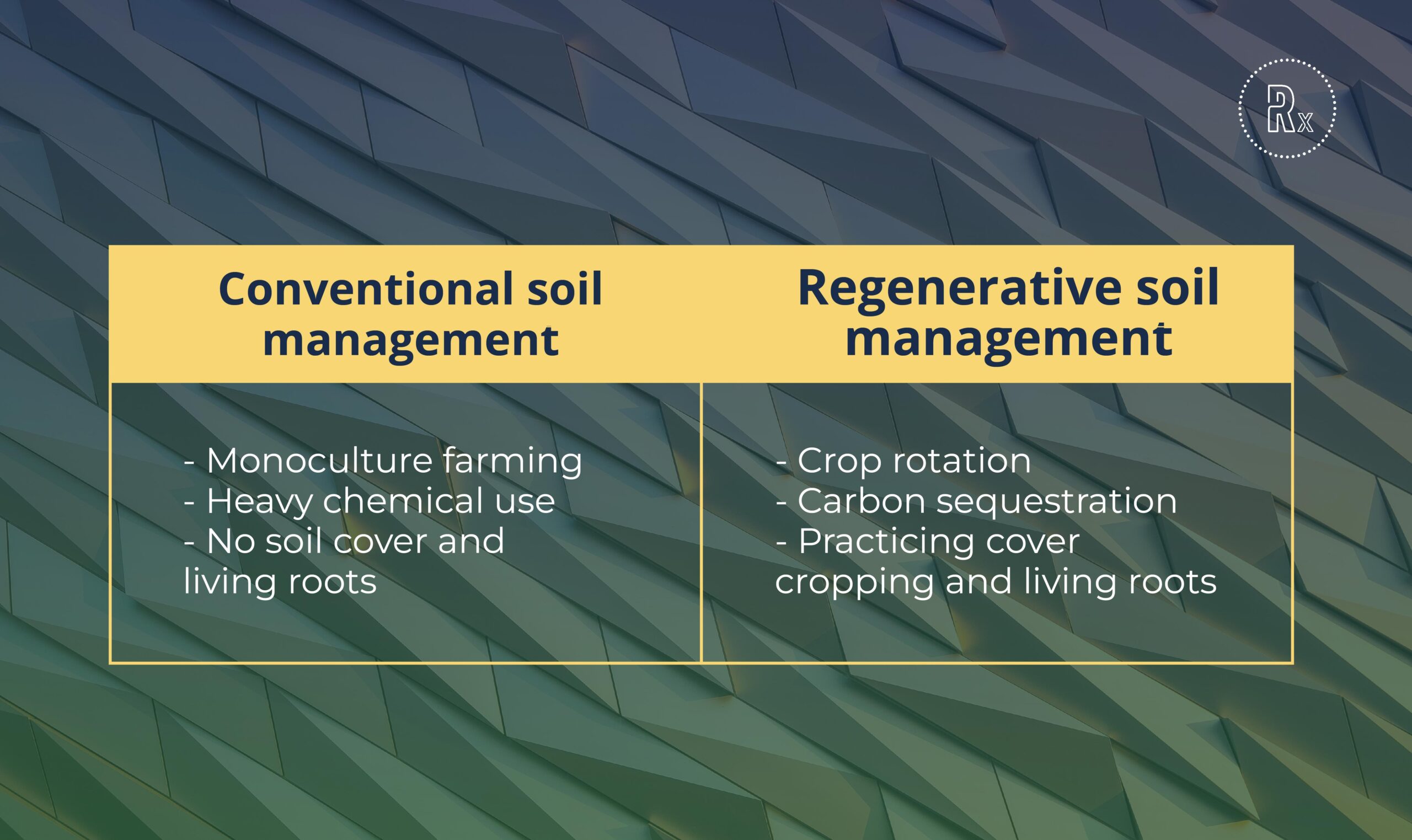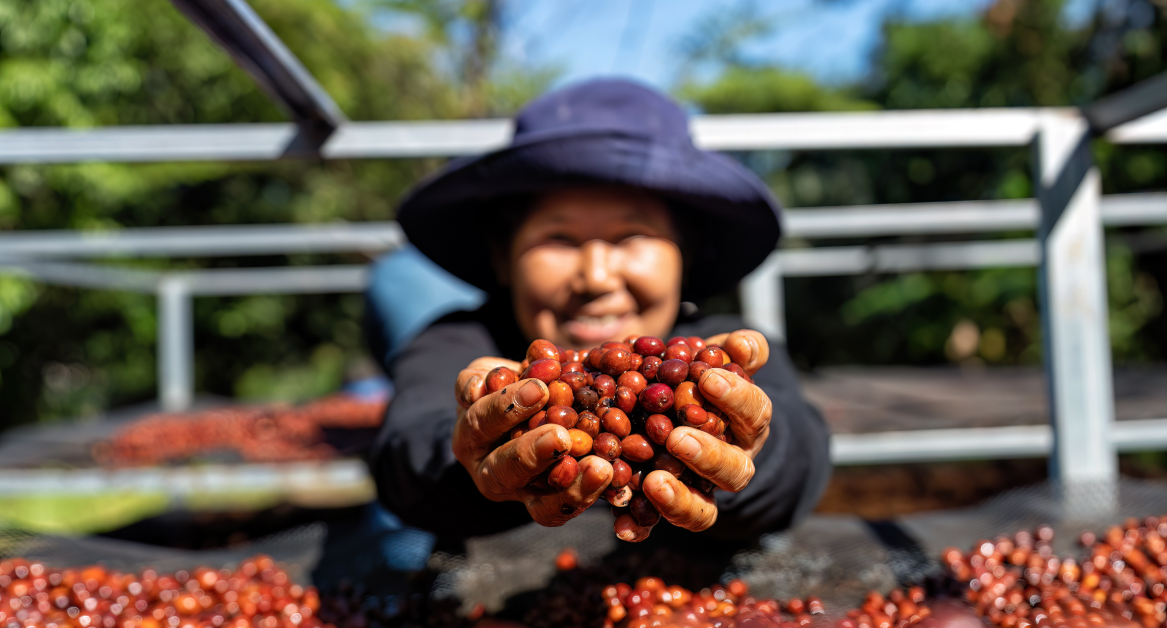It is a new era of sustainable agriculture. In a world where the environment is facing enormous challenges, the concept of regenerative agriculture farmers the soil emerges as a better prospect to deal with climate change.
In this blog, we will explore the core principles and practices of regenerative soil, under the umbrella concept of regenerative agriculture, and how they are reshaping the way we grow our food.
What is Regenerative Soil?
Regenerative soil is not just dirt; it’s one of the best examples of sustainable agriculture. Unlike conventional soil management, which often depletes the land’s natural resources, regenerative soil focuses on revitalizing and nurturing the soil, creating a thriving ecosystem beneath the surface of agricultural land. This will not only benefit the crops but also mitigate climate change and safeguard the livelihoods of farmers.
One of the fundamental principles of regenerative soil is the promotion of plant diversity. Instead of relying on monocultures for food production, regenerative agriculture practices vary crops. By rotating different plant species, soil health is preserved, and the nutrient cycles remain intact.
In addition to fostering plant diversity, regenerative practices aim to capture and store carbon dioxide, a greenhouse gas that contributes to climate change. This process, known as carbon sequestration, involves trapping carbon in the soil through various organic matter sources. Healthy soils teeming with life—thanks to beneficial soil microbes—act as carbon reservoirs, effectively reducing carbon dioxide levels.
But regenerative soil doesn’t stop there. It goes a step further by using soil biology and incorporating practices like cover cropping and maintaining living roots year-round. These practices protect the soil, preventing erosion and providing a natural shield against harsh weather conditions. With soil cover intact, the delicate balance of soil microbes continues to thrive, making the soil more resilient and resistant to degradation.
Regenerative Soil vs. Conventional Soil Management
In agriculture, regenerative soil and conventional soil management is a clash of philosophies, each with distinct outcomes for the environment, crop quality, and farmer livelihoods.

Conventional soil management: A recipe for erosion
Conventional soil management, once considered a standard practice, has led to a multitude of environmental and agricultural issues. With monoculture farming, heavy chemical use, and the absence of regenerative practices, this approach prioritizes short-term gains at the expense of long-term sustainability.
One of the primary drawbacks of food system of conventional soil management is its reliance on monoculture farming. Monocultures are the repeated planting of a single crop in the same location year after year, which depletes the soil of specific nutrients, leading to a decline in soil health and fertility. As a result, farmers become dependent on synthetic fertilizers to maintain crop yields, speeding up the cycle of soil degradation.
Another concerning aspect of conventional practices is the extensive use of chemical fertilizers, pesticides, and herbicides. While these chemicals may provide a temporary boost to crop production, they come at a significant cost to the environment. The runoff of these chemicals contaminates water sources, harms beneficial insects, and negatively impacts the overall biodiversity of the area, and even people’s health.
Conventional soil management also disregards the importance of maintaining soil cover and living roots. Without these crucial elements of soil disturbance, the soil is exposed to erosion and degradation, making it susceptible to environmental pressures.
Regenerative soil management: A sustainable choice.
In contrast, the regenerative agricultural practices, soil management is an agricultural system that nurtures the land rather than depleting it. The core principle of regenerative agriculture practices is to create an ecosystem within the soil that promotes resilience and sustainability.
Plant diversity lies at the heart of regenerative soil management with crop rotation as a key practice. This approach allows the soil to replenish essential nutrients naturally while preventing the depletion of specific elements. As a result, crop yields remain steady without the need for excessive synthetic inputs.
Regenerative practices take the environment into account by emphasizing soil carbon sequestration alone, capturing and storing carbon dioxide in the soil, and reducing its concentration in the atmosphere. Healthy soils enriched with organic matter and teeming with soil microbes serve as a natural carbon sink, which plays a vital role in climate change mitigation.
Moreover, regenerative soil management incorporates practices like cover cropping and the maintenance of living roots throughout the year. These techniques protect the soil from soil erosion alone, maintain soil moisture, and provide a habitat for beneficial soil microbe
The path forward
Regenerative soil management is not just an alternative; it’s a sustainable solution to the challenges that conventional practices have created. By prioritizing plant diversity, carbon sequestration, and maintaining soil cover and living roots, regenerative practices offer a way forward for agriculture that benefits both the planet and those who work the land.
In the upcoming sections, we will explore specific techniques used to achieve regenerative soil, and practical steps that farmers can take to transition from conventional to advance regenerative agriculture practices.
💡 Read more: Soil Health Matters, Why Every Consumer Should Take Note
10 techniques to achieve regenerative soil
To conduct regenerative soil, a set of powerful techniques and practices are introduced in agricultural sector, reshaping the landscape of agriculture and creating a sustainable path.
- Crop rotation: By varying the types of crops grown in a particular area from season to season, the soil can naturally replenish essential nutrients. Different crops have different nutrient demands and contributions, creating a balanced ecosystem within the soil. Crop rotation not only prevents nutrient depletion but also disrupts the life cycles of pests and diseases, reducing the need for chemical interventions.
- Example: In a field, a farmer rotates between planting corn one season and soybeans the next, alternating between the two to prevent nutrient depletion and manage pests naturally.
- Cover cropping: Cover cropping involves planting specific crops, known as cover crops, in between main crop seasons. These cover crops help protect the soil from erosion, retain moisture, and improve overall soil structure. Additionally, certain cover crops, like Legumes, can fix atmospheric nitrogen, providing a natural source of this essential nutrient for the subsequent crop.
- Example: During the winter months, a farmer plants a cover crop like winter rye to protect the soil from erosion and add soil organic matter back. This cover crop is later incorporated into the soil before planting the main crops in the spring.
- No-till farming: Traditional farming methods often involve tilling the soil, which can disrupt its structure and lead to erosion. No-till farming, on the other hand, avoids plowing the land. This practice maintains the integrity of the soil and promotes the development of healthy soil microbes.
- Organic matter integration: Increasing the organic matter in the soil is a cornerstone of regenerative agriculture. Organic matter, such as compost or decomposing plant material, acts as a source of nutrients for soil microbes. These microbes, in turn, break down organic matter, enriching the soil with essential nutrients. Higher organic matter levels improve soil structure, moisture retention, and overall fertility.
- Example: Adding compost made from kitchen scraps and yard waste helps increase organic matter content in the soil thus improving soil health andg its fertility.
- Management of soil microbes: Regenerative practices prioritize the well-being of these tiny organisms. Strategies like reduced chemical use and no-till farming encourage the proliferation of beneficial soil microbes. Healthy soil teeming with life not only enhances nutrient cycling but also boosts soil resilience.
- Example: Some of the well-known soil microbes include: Bacteria (Rhizobium, Mycorrhizal fungi), Fungi, Roundworms, Actinomycetes, Protozoa, etc.
- Diverse plantings: Encouraging plant diversity is crucial to regenerative soil management. Diverse plantings deter pests and diseases, promote nutrient cycling, and maintain the balance of the soil ecosystem. Polyculture, which involves growing different crops in close proximity, further enriches the soil while reducing the need for chemical interventions.
- Example: A mix of vegetables, herbs, and flowers together in the same garden bed.
- Carbon sequestration: One of the central pillars of regenerative soil practices is carbon sequestration. By capturing and storing carbon dioxide in the soil, regenerative agriculture mitigates climate change while enriching soil fertility. The process involves incorporating organic matter, promoting soil microbial activity, and fostering the development of carbon-rich humus.
- Agroforestry: Agroforestry combines the cultivation of trees with other agricultural crops. This practice not only diversifies plantings but also provides shade, windbreaks, and additional organic matter in the form of fallen leaves and branches. Agroforestry contributes to soil health and ecosystem resilience.
- Example: A farm interplants fruit trees with vegetable crops, providing shade for the vegetables and contributing fallen leaves and branches from the trees as organic matter to the soil.
- Managed grazing: For farms that include livestock, managed grazing is a regenerative practice that mimics the natural movement of herbivores in ecosystems. Controlled grazing can improve soil quality, promote plant diversity, and enhance nutrient cycling.
- Biological pest control: Regenerative practices emphasize the use of biological methods for pest control. Beneficial insects, birds, and other organisms are harnessed to naturally control pests, reducing the need for chemical pesticides.
- Example: Encouraging the presence of ladybugs to control aphid populations in their crop fields instead of using chemical pesticides.
These regenerative techniques are not mutually exclusive; rather, they complement one another in creating a holistic approach to sustainable agriculture.
A brighter, greener future with RegenX
The path to a sustainable future in agriculture is regenerative soil practices. These techniques not only enhance crop yields and protect the environment but also offer a lifeline to smallholder farmers struggling with conventional practices.
By providing post-harvest guidance and support for regenerative agriculture, RegenX empowers farmers to adopt these practices, opening doors to higher farm-gate prices and better economic prospects. Furthermore, through the RegenX Flywheel, global buyers are connected with regenerative farming regions, securing toxic-free and traceable ingredients.
Let RegenX lead the way in this sustainable journey of your business. Contact us now!



